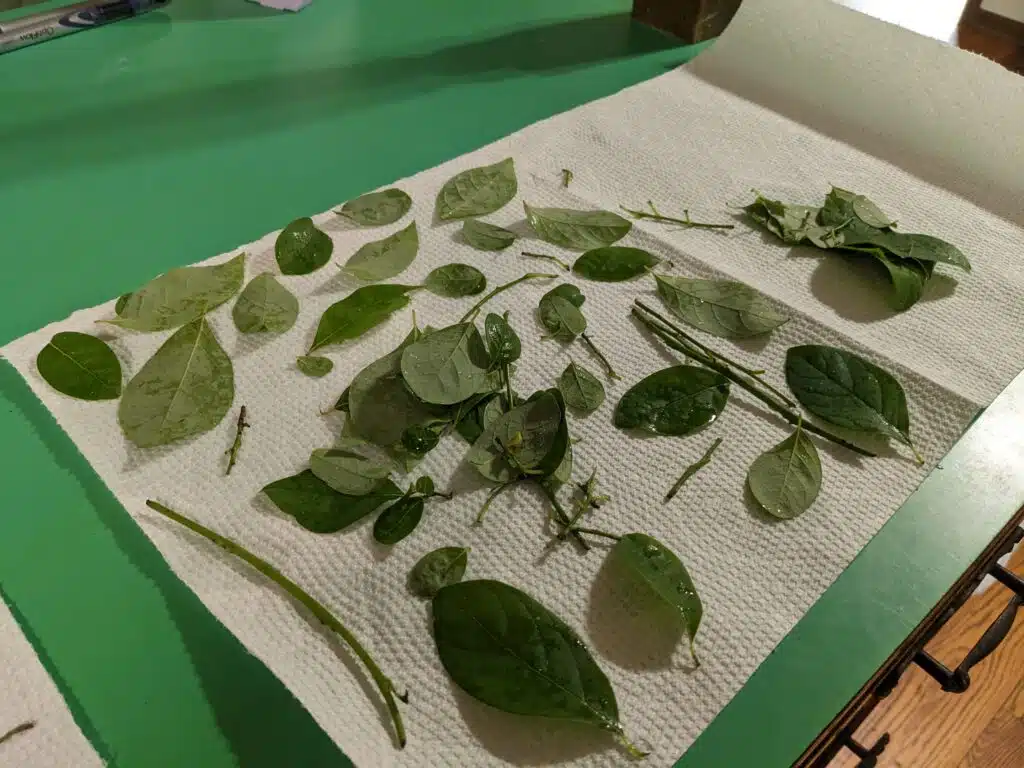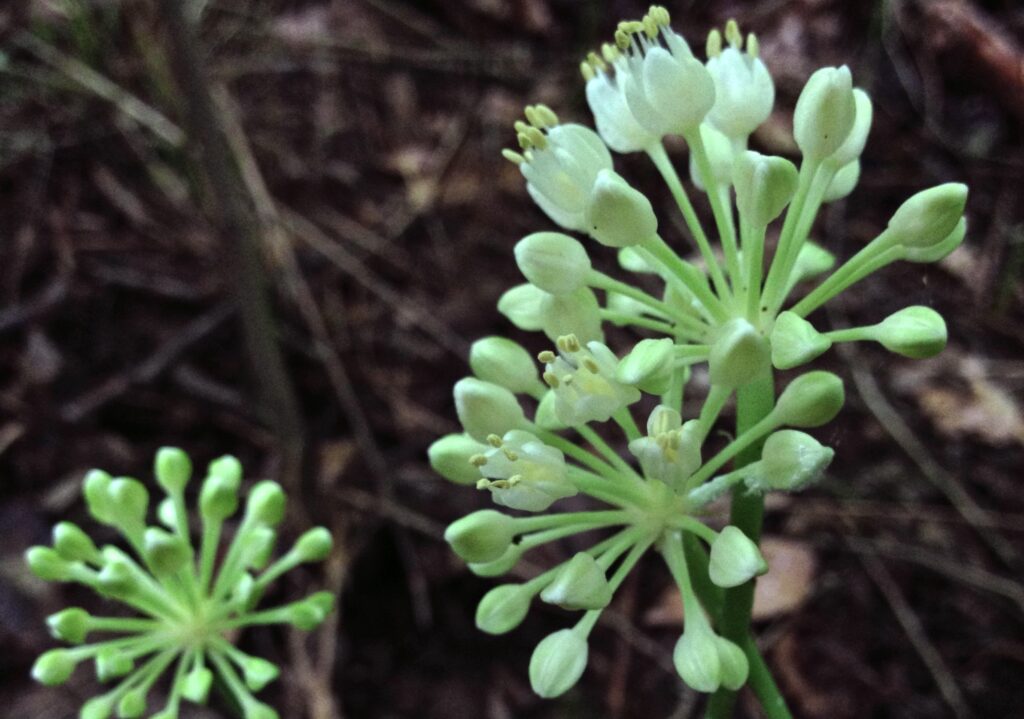
Summer is a flowering and fruiting time when many of the bushes and shrubs come to life with their colors and fruits. Summer is also a time of change for the Holden Arboretum, as different construction developments will occur to help progress The Arboretum’s goals. In Working Woods, for example, a driveway expansion will be initiated to allow more people access to the programs that will be held in the future. Unfortunately, different shrubs and understory plants inhabit the area that will be expanded for the construction. Spicebush (Lindera benzoin), Wild Ramps (Allium trioccum), and Bloodroot (Sanguinaria canadensis) are a few of many of the plants that make up the understory of the driveway boundaries. In an attempt to create a beneficial outcome from the removal of so many plants, several of the Spicebush, Wild Ramps, Bloodroot, and Wild ginger have been gathered, with the goal of using them now or transplanting them back into Working Woods after the construction has been completed.



This herbaceous harvest began with Spicebush. Spicebush is a small native deciduous shrub with obovate alternate leaves, light brown bark, and gold flowers in the springtime. At the time of harvest, the flowers bloomed, and the berries were beginning to ripen. Because of the size of the Spicebush, the Spicebush was not collected for replanting; instead, the leaves, twigs, and berries were harvested for use. Its flavor and aroma have been commonly described as a mix of allspice and cloves. After collection, the Spicebush was washed and dried with a portion of the leaves, berries, and twigs being dehydrated and stored in the freezer, with the remaining portions left fresh. Three different types of infusions were created using Spicebush: Spicebush-infused simple syrup, Spicebush-infused sugar, and Spicebush-flavored pickled carrots. The fresh leaves and twigs were the best for optimal infusions; however, they can be used over a more extended period when dried. The most successful recipe was the Spicebush pickled carrots. Two versions were made, one with fresh leaves and berries and another using dried leaves and twigs. The fresh version had a more robust Spicebush flavor, while the dried version had a stronger carrot flavor. Although not tested, dried Spicebush leaves can also be used as additions to dry rubs, and the bark and leaves have medicinal properties when used as tea.

The next goal of the salvage was the Wild Ramps. Ramps are a type of bulbous wild onion found throughout eastern North America. Before blooming with small white flowers early in the summer, the bulb produces two or three long green basal leaves that cover the forest floor when growing in groups during spring. The leaves and the white stalks are both edible and can be used to add a garlic onion flavor to various dishes. Although popular in restaurants and farmer’s markets, Ramps need a lengthy amount of time before being old enough for harvest. The germination stage can take up to 18 months, with an additional 6-8 years before they are large enough for harvest (or consumption). It is essential to note the amount of time that Ramps need to be for them to be at a healthy age to ensure that they are being harvested sustainably. The Wild Ramps rescue occurred after the leaves died back and before the stalks began to open with flowers. Because of the harvest time, it was unknown how many Ramps would survive until future transplantation. A soil knife and shovel were used to cut around the Ramps to ensure the maximum number of Ramp survivors. The most important factor was ensuring that the bulbs were not damaged with the Rescued Ramps carefully transferred to rectangular pots (around 1-1.5 inches) and covered in soil to a similar depth to which they were initially. At the time of writing, the Ramps with stalks had successfully begun to bloom!

Bloodroot was also plentiful along the slopes of the construction zone, and as a slow-to-establish native herb with traditional uses in medicine, this plant was also rescued. Bloodroot is a plant native to eastern North America. Its ominous name comes from the red fluid secreted from the stalk and root. Bloodroot contains a toxic compound, sanguinarine which contributes to its medicinal but poisonous properties. It is the most beneficial for short-term usage and has been traditionally used as a medicinal plant to release toxins from the body by inducing vomiting. Additionally, Bloodroot can be used as a cough medicine replacement to help improve oral health. However, when used for an extended period, it can have adverse effects such as dizziness, nausea, blurry vision, and fainting, contributing to its sinister name. These plants rescued were potted or relocated and will not be used medicinally, but still worth highlighting. Ecological relationships extend far beyond humans, of course, and re-planting them will ensure that these plants will continue to benefit their symbionts such as pollinators and ants.

If you are inspired to engage in using Spicebush, Ramps, or even Bloodroot, it’s best to end this blog with a reminder to forage responsibly. The woods and forest are not a “free market”; it is essential to remember that foraging should only be completed where it is legally permitted or on your property. This herbaceous harvest was completed because the plants in the area were scheduled to be removed for construction.

Aisha Zungu
Woodland Community Forestry Intern













